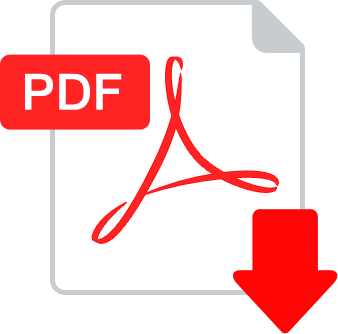Insulin Resistance and Diet Care
Jun Kobayashi*
Division of Pathophysiology, Department of Clinical Dietetics and Human Nutrition, Faculty of Pharmaceutical Science, Josai University, Japan
*Corresponding author:
Jun Kobayashi, MD, PhD, Division of Pathophysiology, Department of Clinical Dietetics and Human Nutrition, Faculty of Pharmaceutical Science, Josai University, Saitama, Japan, Tel: +81-49-271-7223, Fax: +81-49-271-7209, E-mail: junkoba@josai.ac.jp
J Nutri Med Diet Care;
Volume 1, Issue 1,
JNMDC-1-003e,
Editorial
Received: February 26, 2015: Accepted: February 28, 2015: Published: March 02, 2015
Citation: Kobayashi J (2015) Insulin Resistance and Diet Care. J Nutri Med Diet Care
1:003e
Copyright: © 2015 Kobayashi J. This is an open-access article distributed under the terms
of the Creative Commons Attribution License, which permits unrestricted use, distribution,
and reproduction in any medium, provided the original author and source are credited.
During human evolution, insulin signaling developed to ensure normal homeostasis to redirect nutrients to pivotal organs under critical conditions such as starvation, infection, and trauma [1]. However, in the modern era, insulin signaling is often counter-productive due to the current obesogenic environment, resulting in insulin resistance. This is largely because the excessive production of reactive oxygen species (ROS) from the inflammatory adipose tissues and mitochondria inhibit insulin’s actions. In particular, increased mitochondrial oxidative phosphorylation due to the increased influx of nutrients causes superoxide generation and the subsequent formation of ROS, which not only disrupts cell stability, but also activates many kinases, leading to the post-translational modification of signaling molecules (such as insulin receptor substrate 1) in the insulin signaling pathway [2]. However, this induced insulin resistance might be part of the antioxidant defense mechanism to protect cells from further oxidative damage in the insulin-targeted cells [3]. Viewed in this way, oxidative stress might play a primary and causative role in the development of insulin resistance. It has been well documented in a number of recent publications that impaired nitric oxide (NO) bioavailability might be an important molecular mechanism underlying the development of insulin resistance, and also that NO improves insulin resistance at various molecular levels [4]. In particular, the inhibitory effect of NO on the mitochondrial respiratory chain could contribute to the improvement of insulin sensitivity by reducing ROS production in skeletal muscle and adipose tissue [5].
In general, NO is endogenously produced by NO synthases (NOS), a family of enzymes which includes three different isoenzymes in mammals (endothelial, neuronal, and inducible NOS). Daily physical exercise enhances endothelial NOS expression and activity by sensing pulsatile blood shear stress on vascular endothelium [6]. On the other hand, non-enzymatic NO generation via nitrate-nitrite-NO pathway has been attracted great interest since dietary nitrate rich in fruit and vegetable provides NO and NO-like activity through the enterosalivery pathway, and represents an essential back-up system for NO generation in situations where NOS is dysfunctional (especially in endothelial dysfunction due to ageing and atherosclerosis) [7]. Indeed, recently accumulating evidence has suggested that the enhancement of NO availability by exercise and intake of fruit and vegetable rich in inorganic nitrate can improve the features of insulin resistance in animal models and humans [8,9]. However, because the research in this field is just beginning, the original research, reviews, case reports, and other types of submission to this journal are expected to stimulate more intensive research on this diet care for the patients with insulin resistance.
References
-
Soeters MR, Soeters PB (2012) The evolutionary benefit of insulin resistance. Clin Nutr 31: 1002-1007.
-
Szendroedi J, Phielix E, Roden M (2011) The role of mitochondria in insulin resistance and type 2 diabetes mellitus. Nat Rev Endocrinol 8: 92-103.
-
Hoehn KL, Salmon AB, Hohnen-Behrens C, Turner N, Hoy AJ, et al. (2009) Insulin resistance is a cellular antioxidant defense mechanism. Proc Natl Acad Sci U S A 106: 17787-17792.
-
Sansbury BE, Hill BG (2014) Regulation of obesity and insulin resistance by nitric oxide. Free Radic Biol Med 73: 383-399.
-
Larsen FJ, Schiffer TA, Borniquel S, Sahlin K, Ekblom B, et al. (2011) Dietary inorganic nitrate improves mitochondrial efficiency in humans. Cell Metab 13: 149-159.
-
Eghbalzadeh K, Brixius K, Bloch W, Brinkmann C2 (2014) Skeletal muscle nitric oxide (NO) synthases and NO-signaling in "diabesity"--what about the relevance of exercise training interventions? Nitric Oxide 37: 28-40.
-
Weitzberg E, Lundberg JO (2013) Novel aspects of dietary nitrate and human health. Annu Rev Nutr 33: 129-159.
-
Carlström M, Larsen FJ, Nyström T, Hezel M, Borniquel S, et al. (2010) Dietary inorganic nitrate reverses features of metabolic syndrome in endothelial nitric oxide synthase-deficient mice. Proc Natl Acad Sci U S A 107: 17716-17720.
-
Ohtake K, Nakano G, Ehara N, Sonoda K, Ito J3, et al. (2015) Dietary nitrite supplementation improves insulin resistance in type 2 diabetic KKA(y) mice. Nitric Oxide 44: 31-38.





